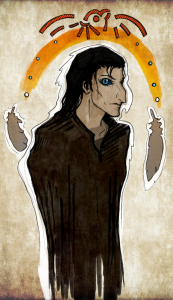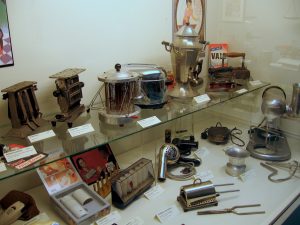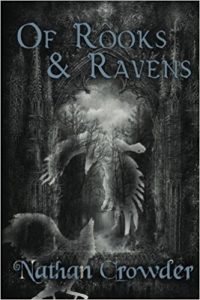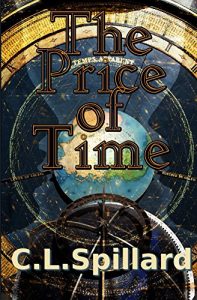An essay by Sorcha Bell, as provided by Judith Field
Art by Leigh Legler
I stand on the edge of the giddying cliff. The sea crashes below. “Skildir,” I whisper. The word catches on the wind. Soon the sun will rise. I must catch the brief January light. I will see the eagles fly, this time. I must. I cannot go home.
~
Home was Liverpool, with Rob, until we split up in November. I had to find somewhere else. Where I wouldn’t have to risk seeing him and Abi every time I went out. The letting agent found me a bedsit on the other side of town. But I saw Rob in everything. I spent a lot of time at work in the lab. Where else did I have to go? But someone would crack a joke and I’d think, I must tell Rob. And I’d remember I couldn’t.
Mum came round for coffee. She sank into the under-stuffed sofa that was also my bed. “Sorcha, this place is a dump,” she said. “You know it. You’re a physicist, not some squatter. Come home.”
I shook my head. “I want to make a go of it, Mum.”
Mum nodded. “That’s my girl. There’s someone out there who’ll only have eyes for you. But, for goodness sake, get some new furniture. Something you can sit on without getting a spring in your bum.”
The landlord didn’t mind taking the chair and sofa away, as long as I didn’t expect him to pay for replacements. I bought some charity shop substitutes. I strung red, green, and blue tinsel round the front door, covering the gap where it didn’t meet the frame. I called a locksmith. My own lock. I put a card up at work, advertising for someone to share the bedsit. Every evening when I got back, I knew the place would be exactly as I left it. And it was, at first.
~
One night, I came home from work. I shut the front door behind me. There was a feeling about the place, out of the ordinary, that I couldn’t explain. I smelled a woody perfume, like roses burning on autumn bonfires. Unfamiliar, and nothing like the bacon I’d cooked for breakfast. I stiffened. Someone had been in the flat.
I’d double locked the door when I went out. It had been like that when I got back. Don’t be stupid. Who breaks in, sprays perfume about, then leaves, locking the door behind them? The scent must have blown in from the street. I switched on the light. I was sure I had left that book open. And I definitely hadn’t washed up my coffee cup from breakfast.
I heard a tick, tick, the sound slow and dragged out. On the wall, by the light switch, in a spot previously empty, hung a clock. It was shaped like a house, plastered with carved oak leaves and trees. It was red, from the fake wooden roof to the pine cones and pendulum dangling below. Seven o’clock. A mechanism whirred, a little door opened at the top and a bird with a curved bill and two sets of talons popped in and out seven times, screeching as it went.
The man stood with his back to me. His hair reached his shoulders and was so black that I almost expected to see ink drip from the ends.
“Sorcha. I see you.” His voice had a croaking, cawing quality. He turned.
I jerked my head back and gasped. His eyes, on the sides of his face, were round and bright blue, his nose curved like an eagle’s beak. He blinked and a clear membrane flicked over his eyes and back again.
My throat tightened, choking off a scream. The chain was still closed, the door still locked and bolted.
“Please,” he said. “You have no watch. I gave you the clock. Do you not love it? You have been so sad. I wanted to help.”
“By scaring me shitless?” You had to humour lunatics, right? Keep them calm.
He took a step toward me. I backed away. “Sorcha,” he said. “This place is uncongenial. I tried to rid it of the odour of pig meat.” His nose wrinkled. “Make more space for you to inhabit. I mean you no harm.”
I grabbed my mobile from my coat pocket. I keyed in nine, nine.
“Your mother wants you to come home.”

He didn’t disappear. He just wasn’t there anymore. A shower of brown feathers fluttered around me. I half saw, half remembered seeing an eagle.
To read the rest of this story, check out the Mad Scientist Journal: Autumn 2017 collection.
Sorcha Bell is, or maybe was, a quantum physicist. That’s how she described herself, in the dictaphone cassette tape I found on a deserted cliff top on uninhabited St Kilda. I played it back on the machine I’d brought to log details of sea birds. The crew of the boat that took me back to the mainland remembered taking a young woman passenger to the island. They said there’d been no recent reports of deaths by falling or drowning. I saw two Sea Eagles, high above the ocean. It’s odd, because they don’t usually fly in pairs.
Judith Field lives in London, UK. She is the daughter of writers, and learned how to agonise over fiction submissions at her mother’s (and father’s) knee. She’s a pharmacist working in emergency medicine, a medical writer, editor, and indexer. She started writing in 2009. She mainly writes speculative fiction, a welcome antidote from the world she lives in. Her work has appeared in a variety of publications in the USA, UK, and Australia. When she’s not working or writing, she studies English, knits, sings, and swims, not always at the same time. She blogs at Luna Station Quarterly.
Leigh’s professional title is “illustrator,” but that’s just a nice word for “monster-maker,” in this case. More information about them can be found at http://leighlegler.carbonmade.com/.
“The Observer’s Paradox” is Copyright 2017 Judith Field
Art accompanying story is Copyright 2017 Leigh Legler






 This month’s mad scientist alum news brings us novels, short stories, translations, and honorable mentions!
This month’s mad scientist alum news brings us novels, short stories, translations, and honorable mentions!

